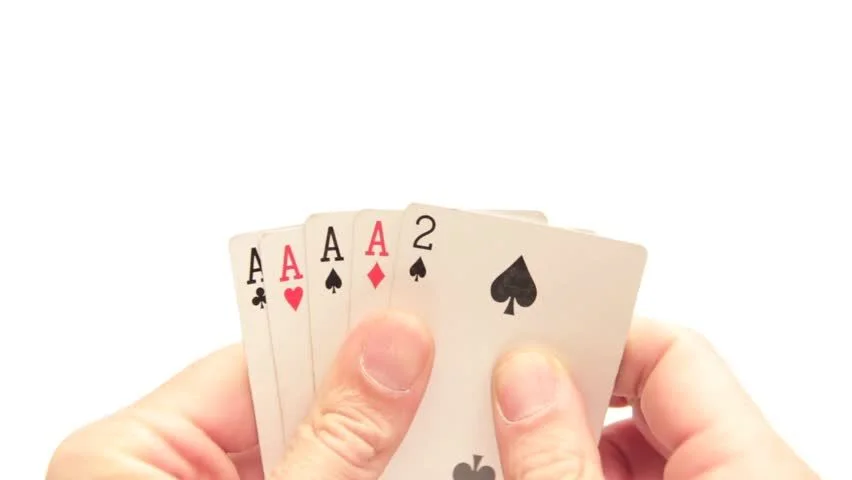
Texas poker hands: comprehensive guide
Understanding texas poker hands is fundamental to becoming a successful player in Texas Hold’em. In poker, the strength of your hand determines your strategy and potential to win. Mastering the poker hands highest to lowest is crucial for making informed decisions, whether you’re playing casually with friends or competing in high-stakes tournaments.
Overview of poker hand rankings
In Texas Hold’em, knowing the texas poker hands and their rankings from poker hands highest to lowest can significantly impact your strategy and success.
Poker hands are ranked based on the rarity and difficulty of achieving them, with the most powerful hands being the hardest to obtain. The following is a detailed list of texas poker hands, ranked from highest to lowest, along with brief descriptions of each.
1. Royal flush
The Royal flush is the highest-ranking hand in poker. It consists of the Ace, King, Queen, Jack, and Ten, all of the same suit. Achieving this hand is extremely rare, but when you do, it guarantees a win unless another player also has a Royal Flush, which results in a tie.
2. Straight flush
The Straight flush is the second-highest hand. It includes any five consecutive cards of the same suit. For example, a hand containing 8, 9, 10, Jack, and Queen of hearts is a Straight Flush. If two players have a Straight Flush, the one with the highest top card wins.
3. Four of a kind
Also known as “quads,” Four of a Kind consists of four cards of the same rank and one unrelated card. For instance, four Aces and a 3. This hand ranks below a Straight Flush but above a Full House.
4. Full house
A Full house combines three cards of one rank and two cards of another. An example would be three Kings and two 10s. If two players have Full Houses, the one with the higher three of a kind wins.
5. Flush
A Flush is made up of any five cards of the same suit, not in sequence. For example, a hand with 2, 5, 7, 10, and Queen of diamonds. If two players have a Flush, the highest card determines the winner.
6. Straight
A Straight includes five consecutive cards of different suits. An example would be 4, 5, 6, 7, and 8. The highest card in the sequence determines the strength of the Straight.
7. Three of a kind
Three of a kind comprises three cards of the same rank and two unrelated cards. For instance, three Jacks, a 7, and a 9. This hand beats Two Pair and lower hands.
8. Two pair
Two pair consists of two sets of pairs and one unrelated card. For example, a hand with two 5s, two 8s, and a King. If two players have Two Pair, the highest pair wins, and if necessary, the second pair and the kicker (unrelated card) break ties.
9. One pair
A One pair hand contains two cards of the same rank and three unrelated cards. An example is two Queens, a 4, a 9, and a King. The highest pair wins if two players have One Pair, with the remaining cards acting as tiebreakers.
10. High card
When no other hands are made, the High card hand comes into play. It consists of five unrelated cards, and the one with the highest single card wins. For instance, if you have an Ace, 7, 5, 3, and 2, your High Card is the Ace.
This knowledge allows players to evaluate their hands accurately, develop effective strategies, and ultimately improve their chances of winning in Texas Hold’em.
Texas Hold’em winning hands
In Texas Hold’em, understanding what constitutes a winning hand is crucial to your success. Whats a good hand in poker? The strength of your hand determines how you play each round and directly influences your chances of winning.

Best starting hands
Starting hands are the two cards you are dealt initially, and having a strong starting hand gives you a significant advantage. Here are some of the best hands in poker you can start with:
- Pocket aces (AA): The best possible starting hand in Texas Hold’em. Known as “pocket rockets,” this hand gives you the highest probability of winning against any other starting hand.
- Pocket kings (KK): The second-best starting hand. Also known as “cowboys,” pocket kings are strong but can be vulnerable if an ace appears on the board.
- Pocket queens (QQ): A powerful hand, but like pocket kings, it can be challenged if higher cards appear on the board.
- Ace-king suited (AKs): Known as “Big Slick,” this hand has the potential to form high pairs, straights, or flushes, making it very versatile and strong.
- Pocket jacks (JJ): Strong but vulnerable to higher cards on the board.
- Ace-queen suited (AQs): A high-ranking hand with potential for straights and flushes.
- King-queen suited (KQs): Another strong starting hand with potential for straights and flushes.
Odds and probabilities
Here are the probabilities for some of the best starting hands:
- Pocket aces (AA): The probability of being dealt pocket aces is 0.45%, or roughly 1 in 221 hands. Despite the low probability, this hand wins around 85% of the time when played correctly.
- Pocket kings (KK): The probability of being dealt pocket kings is also 0.45%. This hand wins approximately 82% of the time but is more vulnerable if an ace appears on the board.
- Pocket queens (QQ): With the same probability of being dealt as AA and KK, pocket queens win about 80% of the time against random hands.
- Ace-king suited (AKs): The probability of being dealt AK suited is 0.30%. This hand wins about 65% of the time when played aggressively.
- Pocket jacks (JJ): The probability is the same as the other pocket pairs mentioned, but pocket jacks win around 77% of the time, making them slightly more vulnerable than queens, kings, and aces.
Strategies for playing winning hands
- Aggressive play: With strong hands like pocket aces or kings, playing aggressively pre-flop can help eliminate weaker hands and build the pot. Raising and re-raising are common strategies.
- Position awareness: Your position at the table can significantly impact your strategy. Playing strong hands from early positions (blinds, under the gun) requires caution, while late positions (button, cutoff) allow for more aggressive play due to more information on opponents’ actions.
- Pot control: Managing the pot size is crucial, especially with strong but vulnerable hands like pocket queens or jacks. Keeping the pot smaller can help minimize losses if the board develops unfavorably.
- Reading opponents: Observing your opponents’ behavior and betting patterns can provide insights into the strength of their hands. This information is vital for deciding whether to call, raise, or fold.
By recognizing the strongest starting hands, understanding their probabilities, and applying effective strategies, you can enhance your gameplay and increase your chances of winning.
Strategy for playing good hands
This section provides strategies for playing strong hands, emphasizing the importance of position, bet sizing, and reading opponents.
Importance of position
Position is a critical factor in Texas Hold’em, influencing how you play your hands. Your position at the table determines the order in which you act and can affect the strength of your hand.

- Early position: When you’re in an early position (blinds, under the gun), you have less information about your opponents’ actions. Therefore, you should play tighter and only bet with the best hands in poker such as pocket aces, kings, or queens.
- Middle position: In the middle position, you have slightly more information than in early position. You can widen your range slightly, adding hands like Ace-King, Ace-Queen, and pocket jacks to your playable hands.
- Late position: Late position (button, cutoff) is the most advantageous. Here, you have the most information about your opponents’ actions, allowing you to play a wider range of hands and bluff more effectively.
Bet sizing
Proper bet sizing is essential for controlling the pot and manipulating your opponents.
- Pre-flop raising: With strong hands, a standard raise of 3-4 times the big blind is effective. This builds the pot and can thin the field, increasing your chances of winning.
- Continuation bets: If you raise pre-flop and are in a good position, making a continuation bet (c-bet) of about half to two-thirds of the pot can help you maintain control and pressure your opponents.
- Value betting: When you have a strong hand post-flop, value betting is key. Bet enough to build the pot but not so much that you scare off opponents. Typically, a value bet should be around half to three-quarters of the pot.
- Bluffing: Effective bluffing requires consistent bet sizing. Bluff in the same manner you would bet with a strong hand to keep your opponents guessing.
Reading opponents
Reading your opponents is crucial for making informed decisions.
- Betting patterns: Pay attention to how your opponents bet in different situations. Consistent betting patterns can reveal the strength of their hands.
- Physical tells: In live games, look for physical tells such as nervous habits or changes in behavior when they have a strong or weak hand.
- Timing tells: Online, timing can be a tell. Quick bets may indicate weakness, while long pauses could mean your opponent is contemplating a big decision with a strong hand.
Maximizing value from strong hands
To maximize value from strong hands, consider the following tips:
- Slow playing: Occasionally, slow playing a strong hand can be effective, especially against aggressive opponents. By checking or calling rather than raising, you can induce bluffs and build a larger pot.
- Trap betting: Set a trap by betting small or checking with a strong hand, enticing your opponent to bet big. This can lead to significant profits if they fall into the trap.
- Positional advantage: Use your position to your advantage by controlling the betting and gathering information. In late position, you can extract more value from strong hands by making informed decisions based on your opponents’ actions.
Minimizing losses
Even with strong hands, it’s important to minimize losses when the situation turns unfavorable:
- Know when to fold: Even the best hands in poker can be beaten. If the board develops unfavorably or your opponents’ actions suggest they have a stronger hand, be prepared to fold to minimize losses.
- Pot control: Avoid overcommitting to the pot with one-pair hands or weak two-pair hands. Control the pot size to prevent significant losses if your hand is outdrawn.
- Bankroll management: Always practice good bankroll management. Don’t risk too much of your stack on a single hand, and ensure you have enough chips to continue playing effectively.
Knowledge of texas hold em winning hands combined with strategic play will enhance your overall poker performance.
Common mistakes to avoid with poker hands
In Texas Hold’em, even experienced players can fall into common traps and make mistakes that can cost them the game. Here, we identify some frequent errors and provide advice on how to enhance your gameplay.

Overvaluing hands pre-flop
One of the most common mistakes is overvaluing certain starting hands. While texas hold em winning hands like pocket aces or kings are undeniably strong, other hands such as Ace-Queen offsuit or King-Jack can be problematic, especially from early positions.
- Avoidance tip: Stick to a solid starting hand strategy, particularly in early positions. Reserve more speculative hands for later positions where you can act after seeing other players’ actions.
Misplaying medium strength hands
Hands like middle pairs (e.g., 8-8 or 9-9) and medium suited connectors (e.g., 8-9 suited) can be tricky. Players often misplay these hands by either being too aggressive or too passive.
- Avoidance tip: Play medium strength hands carefully. Avoid committing too many chips pre-flop unless you are in a late position and the situation warrants it. Post-flop, be prepared to fold if the board is unfavorable or if facing significant aggression.
Ignoring position
Ignoring the importance of position is a critical mistake. Playing strong hands in the wrong position can lead to substantial losses.
- Avoidance tip: Always consider your position when deciding whether to play a hand. Hands that are strong in late positions may not be worth playing from early positions due to the lack of information and the higher likelihood of facing raises from opponents.
Overcommitting to top pair
Many players get too attached to top pair hands, such as Ace-high with an Ace on the board. While top pair is often good, it is not invincible.
- Avoidance tip: Be mindful of the board texture and your opponents’ actions. If the board shows potential straights, flushes, or your opponent is showing aggression, reassess the strength of your top pair and be ready to fold if necessary.
Poor bet sizing
Inconsistent or inappropriate bet sizing can give away the strength of your hand or fail to protect it adequately.
- Avoidance tip: Use consistent bet sizing to keep your opponents guessing. When value betting, ensure your bets are large enough to build the pot but not so large that they scare away potential callers. Conversely, avoid small bets that provide good pot odds for drawing hands.
Neglecting opponent reading
Failing to pay attention to your opponents’ playing styles and tendencies can lead to costly mistakes. Each player has a unique style that can provide clues about their hand strength.
- Avoidance tip: Observe your opponents closely. Note their betting patterns, reaction times, and any physical tells if playing live. Use this information to inform your decisions and exploit their tendencies.
Chasing draws without odds
Chasing straights or flushes without proper pot odds is a frequent mistake. Players often call bets hoping to complete their draw without considering the actual chances.
- Avoidance tip: Always calculate your pot odds and compare them to the odds of completing your draw. Only chase draws when the pot odds justify it. If the cost is too high, it’s better to fold and wait for a better opportunity.
By avoiding these common mistakes with texas poker hands, you can significantly improve your gameplay.
Mastering texas poker hands for success
Recognizing the importance of hand rankings, position, bet sizing, and opponent reading are all critical components of a winning strategy. Additionally, mastering advanced concepts such as implied odds, pot odds, and hand ranges can further refine your gameplay and decision-making processes.
Remember, poker is a game of skill, strategy, and continuous learning. By internalizing the knowledge shared in this guide, you will be well-equipped to dominate the tables and enjoy the thrill of Texas Hold’em.
Keep studying, practicing, and honing your skills, and you’ll soon see the rewards of your efforts in your poker performance. Happy playing!

 July 22, 2024
July 22, 2024